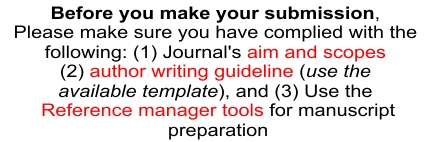UPAYA PENCEGAHAN GAMING DISORDER PADA REMAJA: LITERATURE REVIEW
Abstract
Background: Gaming disorder has become a global concern along with the increasing use of technology and video games among teenagers. The World Health Organization (WHO) designated gaming disorder as a mental health disorder in the International Classification of Diseases (ICD-11) in 2018. Gaming disorder is characterized by reduced control over games, as well as an increased priority of playing games compared to other activities. Based on this, it is necessary to make efforts to prevent gaming disorder, especially in adolescents. Purpose: This study discusses in more detail the prevention of gaming disorder in adolescents, so that the incidence of gaming disorder can be minimized as early as possible. Methods: The research carried out was secondary research with a literature review type. In selecting literature, researchers determine several articles' suitability. Based on keyword searches in 4 databases (Google Scholar, Science Direct, PubMed, and Springer Link), the total number of articles is 1,760 articles. Then the articles were selected based on the eligibility criteria into 6 articles. Results: The articles that have been reviewed discuss efforts to prevent gaming disorder in adolescents through telenursing, cognitive behavioral therapy, emotional regulation, and optimizing family functions. Conclusion: Prevention of gaming disorder in adolescents requires a holistic and integrated approach, with the important role of health workers and families.References
Djafar, R., & Dwisetyo, B. (2019). Penerapan Telenursing Terhadap Perilaku Remaja Dalam Mencegah Internet Gaming Disorder Di STIKES Muhammadiyah Manado. Jurnal Sains Dan Teknologi, 111–118. https://isaintek.polinef.ac.id/index.php/isaintek/article/view/143
Eisma, M. C., & Stroebe, M. S. (2021). Emotion Regulatory Strategies in Complicated Grief: A Systematic Review. Behavior Therapy, 52(1), 234–249. https://doi.org/10.1016/j.beth.2020.04.004
Hidaayah, N., Yunitasari, E., Kusnanto, K., Nihayati, H. E., Santy, W. H., Putri, R. A., & Rahman, F. S. (2022). Parenting in the Prevention of Internet Gaming Addiction. Open Access Macedonian Journal of Medical Sciences, 10(G), 731–738. https://doi.org/10.3889/oamjms.2022.7980
Isil, A. ., & Simsek, A. (2023). Current Studies in Healthcare and Technology: Use Of Digital Technology In Health Care For Children. www.isres.org
Jo, Y. S., Bhang, S. Y., Choi, J. S., Lee, H. K., Lee, S. Y., & Kweon, Y. S. (2019). Clinical characteristics of diagnosis for internet gaming disorder: Comparison of DSM-5 IGD and ICD-11 GD diagnosis. Journal of Clinical Medicine, 8(7). https://doi.org/10.3390/jcm8070945
King, D. L., & Potenza, M. N. (2019). Not Playing Around: Gaming Disorder in the International Classification of Diseases (ICD-11). Journal of Adolescent Health, 64(1), 5–7. https://doi.org/10.1016/j.jadohealth.2018.10.010
Ko, C. H., & Yen, J. Y. (2020). Impact of COVID-19 on gaming disorder: Monitoring and prevention. Journal of Behavioral Addictions, 9(2), 187–189. https://doi.org/10.1556/2006.2020.00040
Lindenberg, K., Kindt, S., & Szász-Janocha, C. (2022). Effectiveness of Cognitive Behavioral Therapy-Based Intervention in Preventing Gaming Disorder and Unspecified Internet Use Disorder in Adolescents: A Cluster Randomized Clinical Trial. JAMA Network Open, 5(2), 1–14. https://doi.org/10.1001/jamanetworkopen.2021.48995
Nakao, M., Shirotsuki, K., & Sugaya, N. (2021). Cognitive–behavioral therapy for management of mental health and stress-related disorders: Recent advances in techniques and technologies. BioPsychoSocial Medicine, 15(1), 1–4. https://doi.org/10.1186/s13030-021-00219-w
Nielsen, P., Favez, N., & Rigter, H. (2020). Parental and Family Factors Associated with Problematic Gaming and Problematic Internet Use in Adolescents: a Systematic Literature Review. Current Addiction Reports, 7(3), 365–386. https://doi.org/10.1007/s40429-020-00320-0
Nugrahani, E. R. (2019). Model Regulasi Emosi Remaja Pengguna Game Online dalam Pencegahan Internet Gaming Disorder di Kota Surabaya. Universitas Airlangga.
Paschke, K., Austermann, M. I., & Thomasius, R. (2021). Assessing ICD-11 gaming disorder in adolescent gamers by parental ratings: Development and validation of the Gaming Disorder Scale for Parents (GADIS-P). Journal of Behavioral Addictions, 10(1), 159–168. https://doi.org/10.1556/2006.2020.00105
Severo, R. B., Soares, J. M., Affonso, J. P., Giusti, D. A., de Souza Junior, A. A., de Figueiredo, V. L., Pinheiro, K. A., & Pontes, H. M. (2020). Prevalence and risk factors for internet gaming disorder. Brazilian Journal of Psychiatry, 42(5), 532–535. https://doi.org/10.1590/1516-4446-2019-0760
Silvers, J. A. (2022). Adolescence as a pivotal period for emotion regulation development for consideration at current opinion in psychology. Current Opinion in Psychology, 44, 258–263. https://doi.org/10.1016/j.copsyc.2021.09.023
Souza-Junior, V. D., Mendes, I. A. C., Mazzo, A., & Godoy, S. (2016). Application of telenursing in nursing practice: an integrative literature review. Applied Nursing Research, 29, 254–260. https://doi.org/10.1016/j.apnr.2015.05.005
Stevens, M. W. R., Dorstyn, D., Delfabbro, P. H., & King, D. L. (2021). Global prevalence of gaming disorder: A systematic review and meta-analysis. Australian and New Zealand Journal of Psychiatry, 55(6), 553–568. https://doi.org/10.1177/0004867420962851
Sugaya, N., Shirasaka, T., Takahashi, K., & Kanda, H. (2019). Bio-psychosocial factors of children and adolescents with internet gaming disorder: A systematic review. BioPsychoSocial Medicine, 13(1), 1–16. https://doi.org/10.1186/s13030-019-0144-5
Wartberg, L., Kriston, L., Zieglmeier, M., Lincoln, T., & Kammerl, R. (2019). A longitudinal study on psychosocial causes and consequences of Internet gaming disorder in adolescence. Psychological Medicine, 49(2), 287–294. https://doi.org/10.1017/S003329171800082X
World Health Organization. (2018). International Classification of Diseases 11th Revision (ICD-11). https://icd.who.int/en
Yu, P. (2021). Telenursing. In Encyclopedia of Gerontology and Population Aging (pp. 4952–4956). Springer International Publishing. https://doi.org/10.1007/978-3-030-22009-9_457










